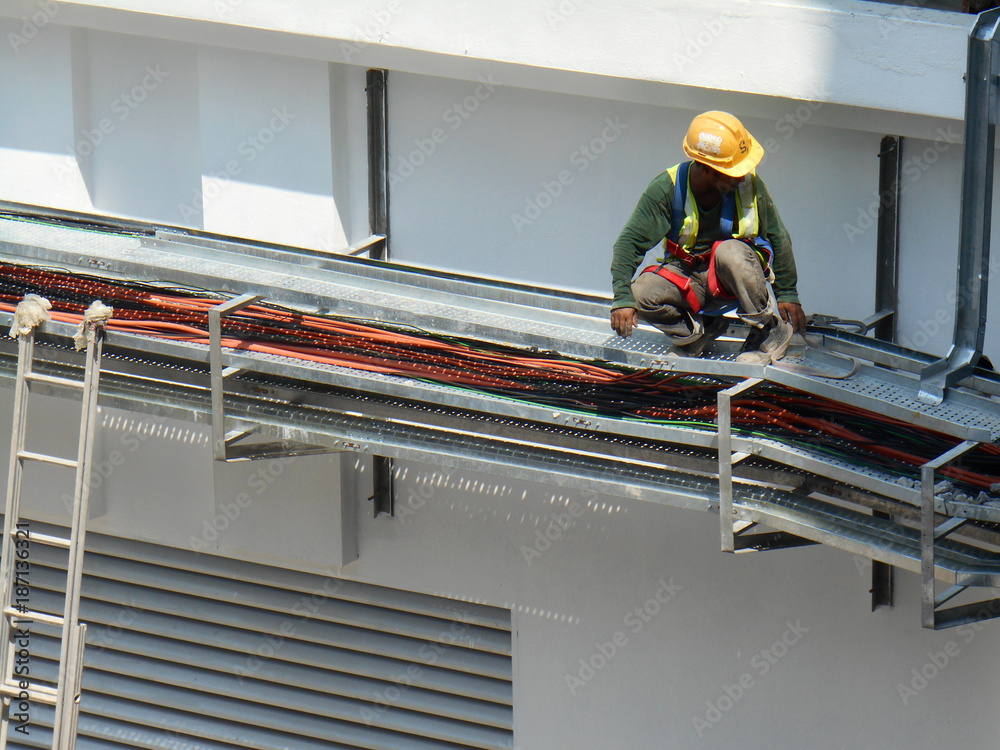
Dangers of Overloading Cable Trays and How to Avoid Them
It’s been said before, but it’s true – cable trays can be dangerous. This article will provide a warning about how to avoid these dangers and keep yourself safe during your cable management.
Why is it Dangerous?
If you’re like most people, you probably have a drawer or closet full of cables. But are those cables being used properly? And are they being overloaded?
Overloading your cable tray can cause a number of problems:
- Damage to the cables: Overloading your cable tray can cause the cables to stretch and potentially damage them. This can be especially true if the cables are heavy or if they’re covered in crimps or connectors.
- Damage to the hardware: Overloaded hardware can also become damaged. This can happen when the screws that hold the hardware together become stripped or when the connectors on the hardware fray. This can lead to decreased performance and even device failure.
- Poor cable management: Overloaded cable trays can lead to messy and unorganized cables, which can be difficult to manage and use efficiently. This can also create a safety hazard as cables can become entangled and tangled with other objects.
If you’re using your network cables correctly and avoiding overloading, you should be safe from any of these dangers. However, it’s always best to check with your network administrator to make sure that your cables are being handled safely and properly.
What are the Dangers of Overloading Cable Trays and How to Avoid Them
If you’re like most homeowners, you probably have a ton of cable boxes and other electronics plugged into your wall sockets. But while it’s convenient to have everything plugged in, it can also be a liability if you overload your cables. Overloading can damage the cables and cause them to wear out more quickly, which will ultimately lead to a loss in picture quality or even a complete loss of service. Here are four ways to avoid overloading your cables:
- Use an extension cord whenever possible. A long cord will give you the flexibility to plug in more devices without having to worry about them damaging your cables.
- Separate your devices into different channels. If you have multiple TVs or other devices that need different types of inputs, try to organize them into separate channels on your cable box or router. This way, if one device starts malfunctioning, you won’t have to worry about affecting the rest of your TV lineup.
- Avoid using excess power sources when plugging in your electronics. Make sure that all of the power sources you’re using are rated for the type of load they’re trying to put on them (for example, using an outlet that’s only meant
The Best Ways to Prevent Overloading Your Cable Trays
When it comes to cable management, it’s important to be mindful of how much cable you’re putting into each tray. Overloading the trays can lead to damage and instability, so it’s important to take your time when installing your cables. Here are a few tips to help you avoid overloading your cable trays:
- Use a Cable Management Plan
Creating a comprehensive cable management plan is the best way to ensure that your cables are managed safely and efficiently. This plan will list the necessary cables and their corresponding locations and will help you organize your cables into manageable groups.
- Use Cable Ties or Cables with Racks
Cable ties or cables with racks are a great way to keep your cables organized and safe. These devices hold cables in place while allowing them to move freely. They’re also easy to install and remove, so you can customize your cable arrangement as needed.
- Use Cable Trays that are Appropriate for Your Needs
Make sure that you select cable trays that are appropriate for the amount of cable that you’re using. Overloading a cable tray can cause

0 comments
Write a comment